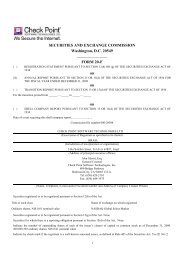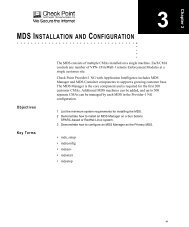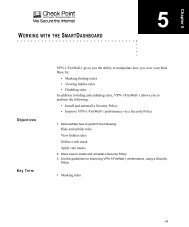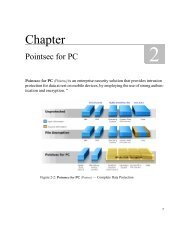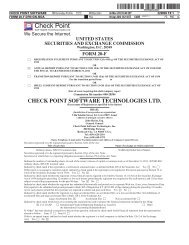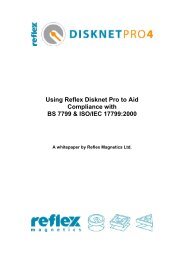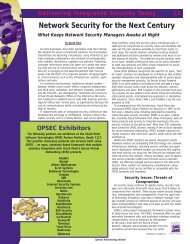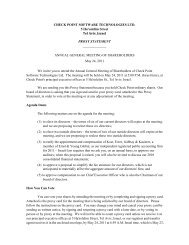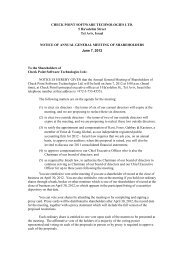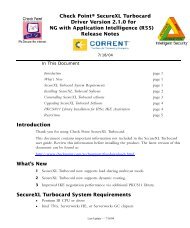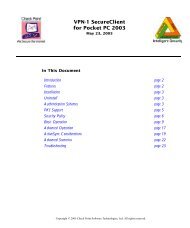Sofaware S-boxtm
Sofaware S-boxtm
Sofaware S-boxtm
You also want an ePaper? Increase the reach of your titles
YUMPU automatically turns print PDFs into web optimized ePapers that Google loves.
Glossary<br />
Subnet Mask<br />
A 32-bit identifier indicating how the network is split into subnets. The subnet<br />
mask indicates which part of the IP address is the host ID and which indicates<br />
the subnet.<br />
TCP<br />
TCP (Transmission Control Protocol) is a set of rules (protocol) used along<br />
with the Internet Protocol (IP) to send data in the form of message units<br />
between computers over the Internet. While IP takes care of handling the<br />
actual delivery of the data, TCP takes care of keeping track of the individual<br />
units of data (called packets) that a message is divided into for efficient routing<br />
through the Internet.<br />
For example, when an HTML file is sent to you from a Web server, the<br />
Transmission Control Protocol (TCP) program layer in that server divides the<br />
file into one or more packets, numbers the packets, and then forwards them<br />
individually to the IP program layer. Although each packet has the same<br />
destination IP address, it may get routed differently through the network.<br />
At the other end (the client program in your computer), TCP reassembles the<br />
individual packets and waits until they have arrived to forward them to you as<br />
a single file.<br />
TCP/IP<br />
TCP/IP (Transmission Control Protocol/Internet Protocol) is the underlying<br />
communication protocol of the Internet.<br />
UDP<br />
UDP (User Datagram Protocol) is a communications protocol that offers a<br />
limited amount of service when messages are exchanged between computers<br />
in a network that uses the Internet Protocol (IP). UDP is an alternative to the<br />
Transmission Control Protocol (TCP) and, together with IP, is sometimes<br />
referred to as UDP/IP. Like the Transmission Control Protocol, UDP uses the<br />
Internet Protocol to actually get a data unit (called a datagram) from one<br />
computer to another. Unlike TCP, however, UDP does not provide the service<br />
of dividing a message into packets (datagrams) and reassembling it at the other<br />
end.<br />
UDP is often used for applications such as streaming data.<br />
152<br />
SofaWare S-box Getting Started Guide



